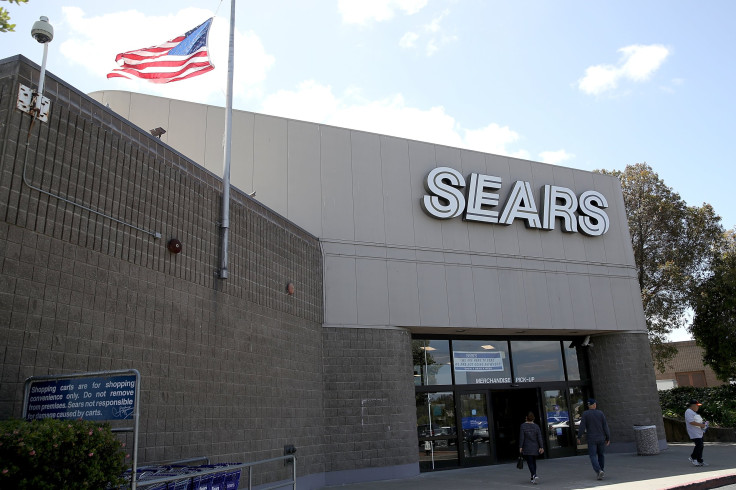Sears Holdings Really Could File For Bankruptcy Next Week

Struggling retail icon Sears Holdings (NASDAQ:SHLD) isn't running out of money -- yet. Nevertheless, there is a meaningful chance of the company filing for bankruptcy protection next week, when approximately $134 million of debt is scheduled to mature. If Sears does opt for bankruptcy, it may never come out the other side -- or what's left could be a completely different company that doesn't have a significant retail operation.
This article originally appeared in the Motley Fool.
Stretched thin
Sears has relied upon asset sales and loans from top shareholder ESL Investments -- which is controlled by Sears Holdings CEO Eddie Lampert -- to stave off bankruptcy for the past few years. This has left the company buried in debt and with few remaining assets that can be sold.
Meanwhile, Sears Holdings is still posting massive losses and burning nearly $2 billion of cash annually. Clearly, this situation is unsustainable
Thus, it's understandable that Lampert is reluctant to provide more liquidity without major changes to the status quo. He is already at risk of not getting a full recovery on some of the loans that ESL has extended to Sears Holdings.
Lampert demands a restructuring
In late September, ESL Investments filed a presentation outlining a restructuring plan that would dramatically cut Sears Holdings' debt. The plan called for Sears to sell $1.75 billion of assets to pay down debt and eliminate nearly $1.5 billion of real estate debt by either selling the real estate or transferring it to the lenders. Another $1.1 billion of debt would be exchanged for new debt without cash interest payments and would ultimately be converted to Sears Holdings stock.
The last of these provisions is the most controversial. For example, unsecured debt holders would have to choose between cashing out at $0.25 on the dollar or exchanging their debt for new bonds that would automatically convert to stock no later than December 2021. Many holders of second-lien secured debt would be pushed to take equity as well.
Unless most lenders agree to this restructuring plan before Oct. 15 (when Sears Holdings faces its $134 million debt maturity), the company will likely file for bankruptcy. Indeed, Sears Holdings hired an outside firm weeks ago to prepare a potential bankruptcy filing, according to The Wall Street Journal.
It's not that Sears is about to run out of money. As of early August, it had $941 million of liquidity, and the company made several liquidity-enhancing moves early in the third quarter. However, Lampert recognizes that the status quo would lead to bankruptcy sooner or later, and believes that a proactive debt restructuring is Sears Holdings' best hope of survival.
Deadlock is a huge risk
ESL's restructuring proposal would significantly improve the company's balance sheet. But it wouldn't do much to address Sears Holdings' ongoing cash burn, which is mainly being driven by operating losses.
As a result, Lampert is having trouble convincing lenders to extend the maturities of the debt they hold -- and ultimately convert it to equity, which could turn out to be worthless. The most notable holdout appears to be former Sears board member Bruce Berkowitz, whose Fairholme Funds have substantial investments in Sears Holdings debt.
In a July letter to Fairholme investors, Berkowitz was upbeat about getting repaid par (or close to par) on the fund's Sears Holdings debt. Just a year earlier, he had estimated that Sears Holdings' assets were worth billions more than its liabilities. His main concern at that time was that the company was continuing to burn cash at a phenomenal rate in its retail operations.
If Berkowitz truly believes that there are enough assets to sell to repay all of Sears Holdings' debts, he will have no interest in Lampert's restructuring plan. Whereas Lampert is worried that Sears Holdings' remaining customers might desert it following a bankruptcy filing, Berkowitz would seem to prefer the liquidation option over trying to keep the company alive at the cost of continuing to burn cash for an indefinite period of time.
What parts of Sears might survive?
Most of Sears Holdings' retail operation has no reason for existence. Customers moved on long ago. However, a few parts of the company could potentially survive a bankruptcy filing, either as part of a restructured Sears or after being sold to third parties in a liquidation process.
For example, Sears and Kmart still have strong market positions in a handful of far-flung places like Guam, Hawaii, Puerto Rico, and the U.S. Virgin Islands. It might be possible to make money there even if Sears Holdings sells or shuts down all of its stores in the continental U.S. The company's Kenmore and DieHard brands could have value as well. Finally, the company owns a handful of intriguing services businesses, specializing in delivery of bulky items like appliances, in-home repairs, and spare parts.
Thus, the Sears name could live on for some time. However, the end is drawing near for the bulk of the flailing Sears/Kmart retail business.
Adam Levine-Weinberg has no position in any of the stocks mentioned. The Motley Fool has no position in any of the stocks mentioned. The Motley Fool has a disclosure policy.





















